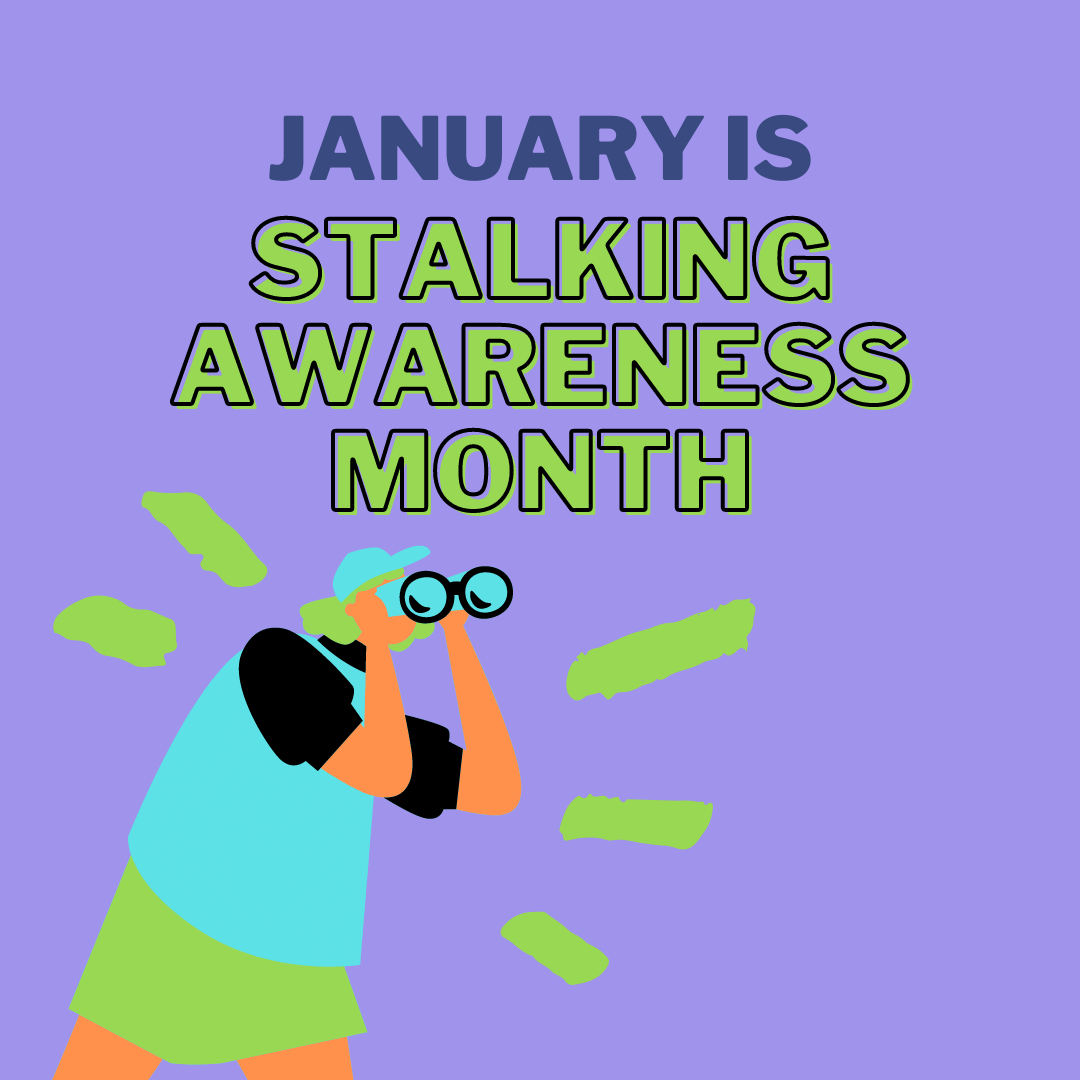by Katrina Clark, Advocacy Center Youth Educator
The Stalking Prevention, Awareness, and Resource Center (SPARC) defines stalking as, “A pattern of behavior directed at a specific person that would cause a reasonable person to fear for the person’s safety or the safety of others; or suffer substantial emotional distress.” In an interview with the University of Southern California, licensed clinical social worker, Jessica Klein, defines stalking as, “unwanted or obsessive behavior toward an individual intended to frighten or coerce.”
Stalking –as with all forms of harassment and abuse– is a pattern of behavior rooted in exercising power and control over someone else.
Stalking behavior can present itself in various ways, including (but not limited to):
- Unwanted contact, both in-person and through technology
- Surveillance, tracking, and/or monitoring of someone
- Following, approaching, and/or contacting the individual’s family and/or friends
- Unwelcome gifts
- Unwanted presence in places someone frequently goes to
- Any additional behavior used to harass or threaten someone
Roughly 3 out of 4 of stalking victims know their stalkers in some capacity (US Department of Justice Statistics Summary, 2009). In fact, the CDC’s National Intimate Partner and Sexual Violence Survey in 2010 found that 66% of female identified stalking victims were stalked by current or former intimate partners; men also were primarily stalked by an intimate partner or an acquaintance, 41.4% and 40.0%, respectively. This is important to keep in mind, as it shows us that stalking can be one controlling tactic amongst many under the greater umbrella of intimate partner violence. In other words, stalking is often an indicator of other forms of violence.
While, colloquially, some may joke about social media “stalking,” we must distinguish between harmless curiosity that honors another person’s sense of safety and well-being, versus the aforementioned behavior that can cause substantial emotional distress for an individual. Stalking is not behavior that should be taken lightly. In fact, 76% of women who are murdered by a current or former intimate partner are stalked by them first. If we are at all confused about how to distinguish harmless and harmful behavior as it relates to social media stalking, check out this article “Where Do We Draw the Line Between Insta-Boredom vs. Insta-Stalking?” Particularly pay attention to the section titled, “Here are some ways that Insta-stalking can start to look like stalking-stalking.”
Stalking is most often methodical and persistent. This kind of calculated effort to intimidate, harass, and/or control someone can have incredibly negative impacts on the stalking victim. Understandably this experience can be deeply unsettling, isolating, and can jeopardize one’s perceived sense of and/or actual safety – contributing to a deterioration of one’s mental, emotional, and physical well-being.
In Klein’s interview with USC on stalking in the age of social media, it is noted that, “Victims may be afraid to report their stalker out of fear of retaliation or be unsure where the dividing line falls between innocent behavior and obsessive, potentially dangerous tendencies.” However, Klein encourages stalking victims to, “break the hold of isolation by seeking help.” This could mean connecting with a trusted friend, local or national victim services agency like the Advocacy Center, and/or law enforcement, depending on the preference of the person being stalked.
If you are interested in learning more about stalking / stalking resources, check out:
The Stalking Prevention, Awareness, & Resource Center (SPARC) What to Do If You’re Being Stalked → visit the Resources for Victims section at the end of the page to find downloadable documentation logs, as well as information on safety planning strategies
Quick Guide to Stalking: 16 Important Statistics, and What You Can Do About It (from the National Coalition Against Domestic Violence)
This 3 minute Stalking Awareness video created for college students by Student Success
